This is a follow-up to last week’s post, which gave a home inspection checklist for the exterior of homes. The goal of this checklist is to prevent homebuyers from being blindsided by some easy-to-spot home inspection defects. This is not a complete nor technical list, but it covers a lot of potential problems.
Side note: bring a good LED flashlight with you while house-hunting. The flashlight on your phone is inferior.
Foundation Problems
Look for cracks in the foundation walls. Generally speaking, cracks larger than 1/4″ in concrete block walls and cracks larger than 1/8″ in poured concrete walls are reason for concern. If you can put your finger in a crack, you definitely have cause for concern.
Cracks that are large enough to put your hand through shouldn’t be cause for concern. They’re cause for repair.
Cracks that have been patched and have opened up again are concerning, as this indicates ongoing movement. Horizontal cracks are more concerning than vertical cracks.
Offsets in the foundation walls are cause for concern as well. The house shown below ended up being demolished.
Wet Finished Basements
It’s usually quite easy to figure out if a finished basement has moisture problems if you’re willing to do just a little bit of digging. Walk around the exterior of the home first, and look for any areas without good water management; for the most part, this means negative grade and missing downspout extensions. When downspouts discharge next to the house, there’s a good chance that there will be a water intrusion issue at about the same place inside the basement.
Basement water intrusion staining always starts at the base of the foundation walls. Pay special attention to inside corners for signs of water intrusion. Loose for stains at the baseboard trim, and stained or patched wall areas. Look behind furniture, and look underneath the carpet if possible.
The photos below show stained wood paneling and black, wet carpet tack strips in the same place.
The photos below, from the same house, show black staining (mold?) at the drywall in one of the inside corners, as well as staining at the baseboard trim.
If there are sub-slab ducts, try to look inside the ducts at every floor register. While this might take a little extra time, it’s well worth the effort. If water has entered this ductwork, it’s a serious problem.
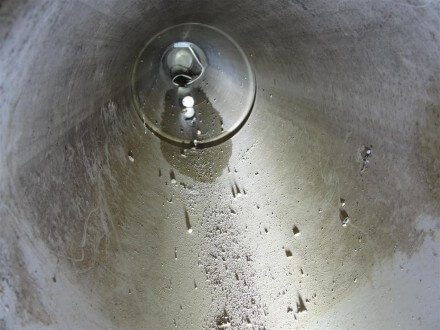
Plumbing – Galvanized Steel Pipes
Galvanized steel water pipes were used on older houses up until about 1950. The problem with galvanized pipes is that they rust on the inside, making the pipe diameter smaller and smaller over time. This leads to reduced water flow at the plumbing fixtures, to the point where it can become impossible to do laundry and take a shower at the same time. Galvanized pipes are also more prone to leakage, typically at the joints.
To inspect water flow at an old house, turn on the laundry sink faucet all the way and then check water flow at the other plumbing fixtures throughout the house. On houses with galvanized pipes, we’ll frequently find no water flow at the second-floor plumbing fixtures when performing this test. Once it gets to that point, it’s time to bring in a plumber to replace some pipes. This could be the interior distribution pipes, the water supply pipe going out to the street, or both.
The photo below shows a first-floor kitchen sink faucet turned on all the way; if you look carefully, you can see a few water droplets in the air. The repair for this condition is to have a plumber replace the old galvanized steel pipes.
The pipe coming from the street to the house is called the supply pipe; when this pipe is galvanized, there’s a good chance that water flow throughout the house will be minimal. The fix for this is expensive; it means digging up the yard and replacing the pipe out to the street.
On older houses, check below the water meter in the basement to verify the supply pipe is something other than galvanized steel. The photo below shows an example of a galvanized water supply pipe.
As with galvanized steel water pipes, galvanized steel drain pipes also rust on the inside. This accumulation of rust reduces the pipe diameter and can lead to clogged drains and leaks.
Galvanized steel plumbing vents also rust out; sometimes they may completely rust through and allow sewer gas into the home, but the vents are typically concealed.
The eventual fix for this is to replace the old steel drains and vents with new ABS or PVC pipes. The first drain to get clogged will always be the kitchen sink drain. Run water down the kitchen sink for about ten minutes to make sure it drains properly.
Neglected Furnaces / Boilers
Watch out for excessive rust, debris, and especially black soot or scorching at the furnace or boiler. This usually means the equipment needs service or replacement.
It’s also helpful to have an idea of how old these appliances are. Once you know where to look, it’s usually pretty easy to do. Check out my blog post on how to determine the age of major appliances.
Electric Hazards
FPE Stab-Lok electric panels are a latent fire hazard. These panels can be easily identified by a label on the panel that says “Stab-Lok”. We always recommend the replacement of these panels.
In houses built from 1965-1974, look for aluminum wiring, or more specifically, aluminum branch circuit conductors. These are a larger concern that can involve expensive repairs. It’s not always possible to identify aluminum wiring without opening the electric panel, but if aluminum conductors are used with NM cables (aka ‘Romex’), it will say “aluminum” right on the cable sheathing. Look for this in the garage or basement.
Fuse panels under 100 amps are typically inadequate for today’s houses, and many insurance companies take issue with fused electric services.
To help determine the size of the electric service, look on the door of the electric panel. Most old fuse panels will either be 60 amp or 100 amp.
Knob and Tube wiring is an obsolete two-wire system found in most pre-1930s homes and is easily identified by the porcelain knobs and tubes that are used to hold and protect the wires. When present, knob and tube wires will usually be visible in attics and unfinished basements, but not always. The photo below shows an example of exposed knob and tube wiring at the ceiling in a basement.
If you find knob and tube wiring in a home, the best that you can hope for is that most of it has already been replaced, and the remaining material is still in pristine condition. Be aware, however, that most home insurance companies charge a premium or refuse to insure homes with knob and tube wiring, even if it’s still in pristine condition. I’m basing that statement on a survey of 30 insurance companies that we conducted in July of 2019.
At worst, the knob and tube wiring has been exposed to high temperatures for long periods of time, causing the insulation on the wires to fall apart, leaving exposed conductors that create a shock and fire hazard. Examples of hazardous knob & tube wires are shown below. Yes, these wires were live at the time of the inspection.
Interior Stains
Stains at the base of patio doors typically indicates water intrusion and rot. Step on the floor next to patio doors to make sure the wood is solid. The photo below shows major rotting on the floor by the patio door.
Water stains on windows are usually caused by condensation, which isn’t a major concern, but stains that are caused by exterior water intrusion are a larger concern. To help determine the difference, click this link on window stains. The photo below comes from that post, showing an example of window staining caused by water leakage from the exterior.
This list should give potential homebuyers a good starting point. As I promised last week, here’s a one-page Home Inspection Checklist in pdf format that should be helpful.
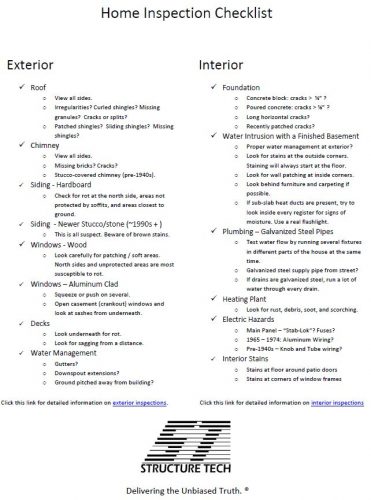
Author: Reuben Saltzman, Structure Tech Home Inspections

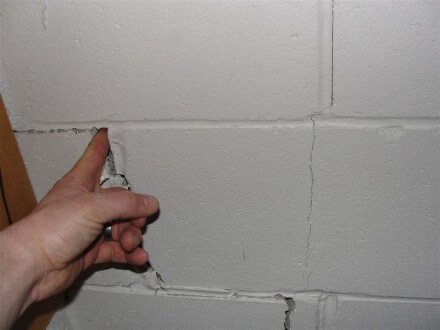
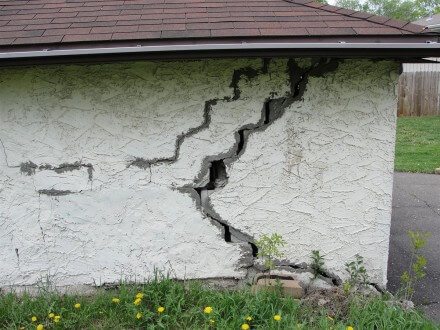
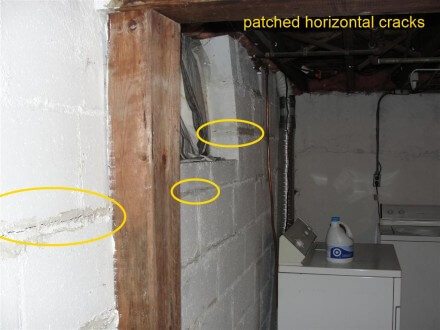
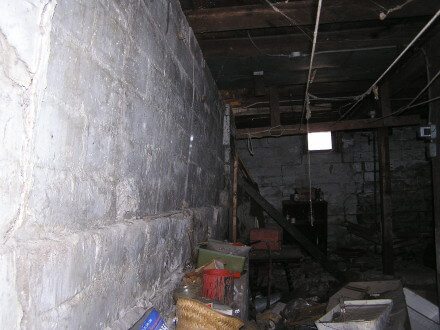
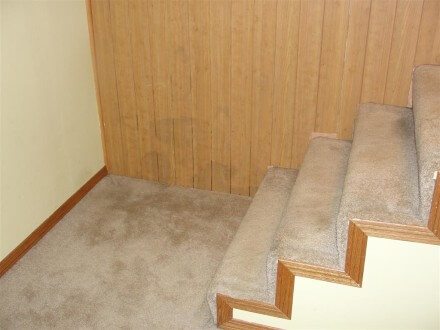
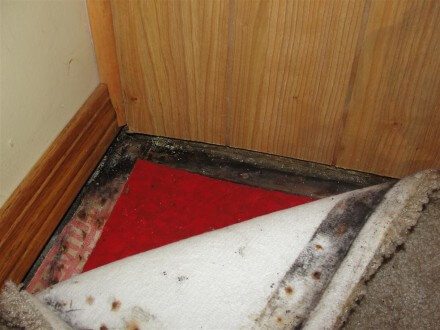
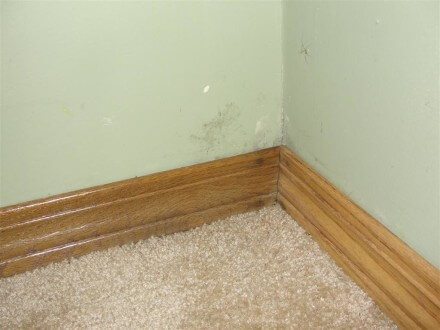
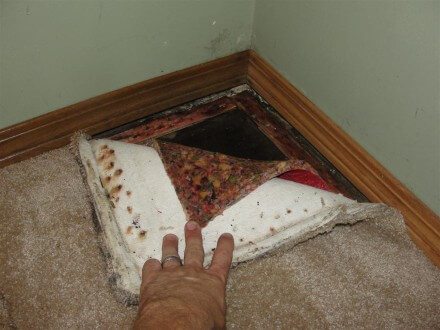
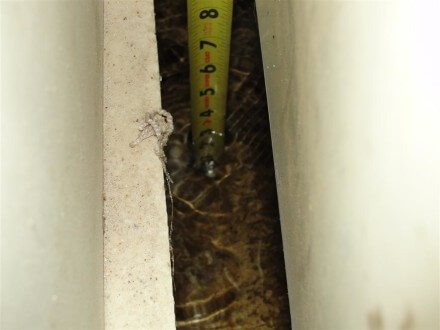
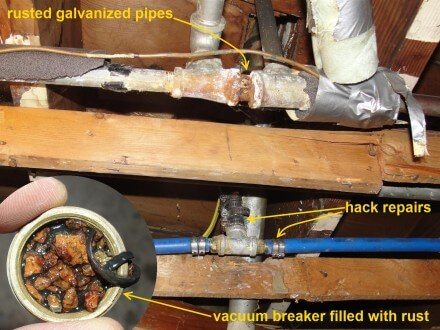
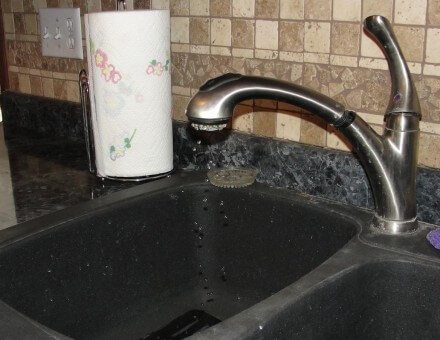
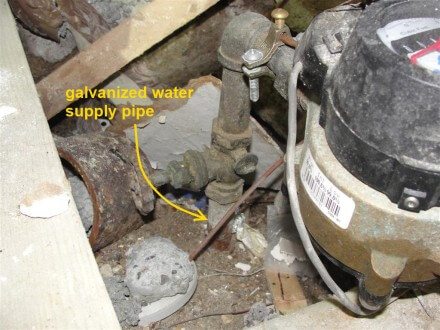
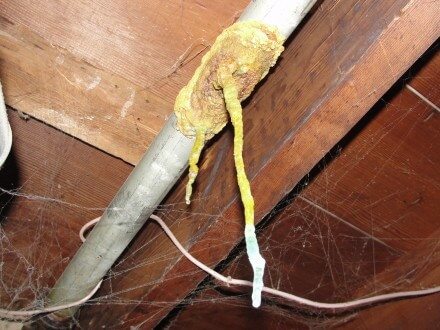
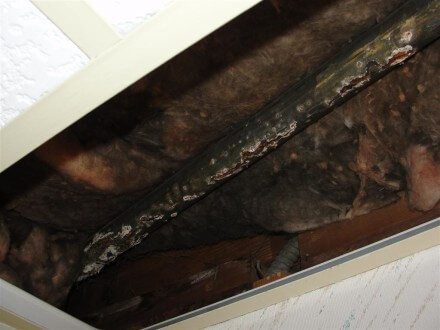
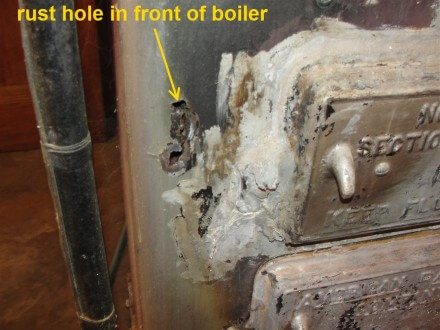
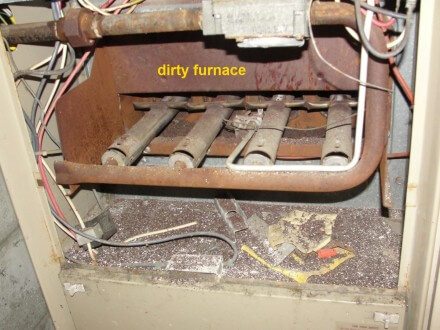
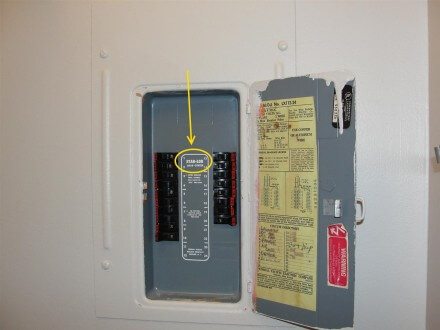
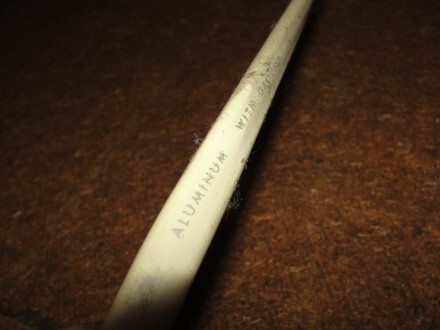
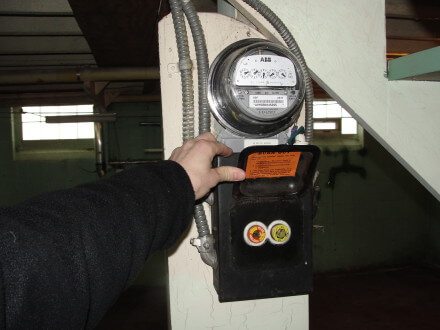
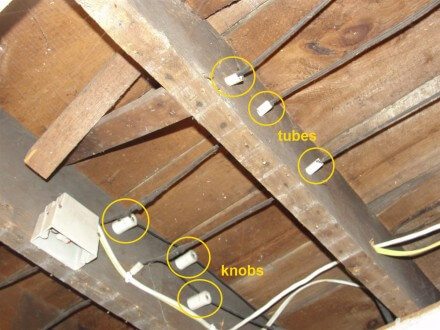
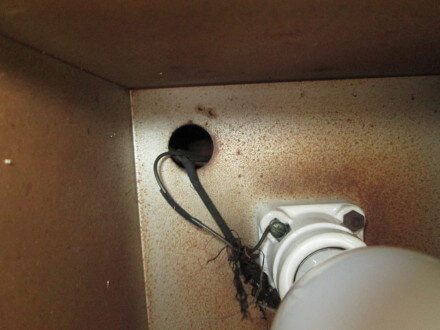
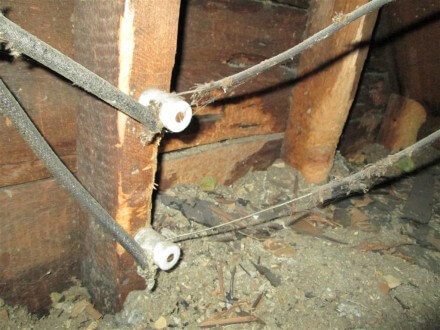
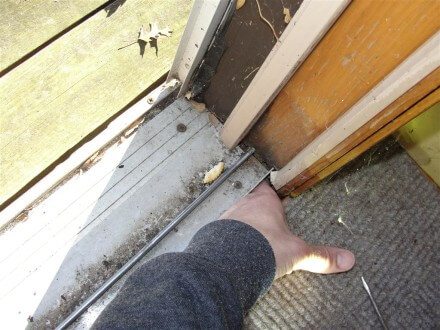
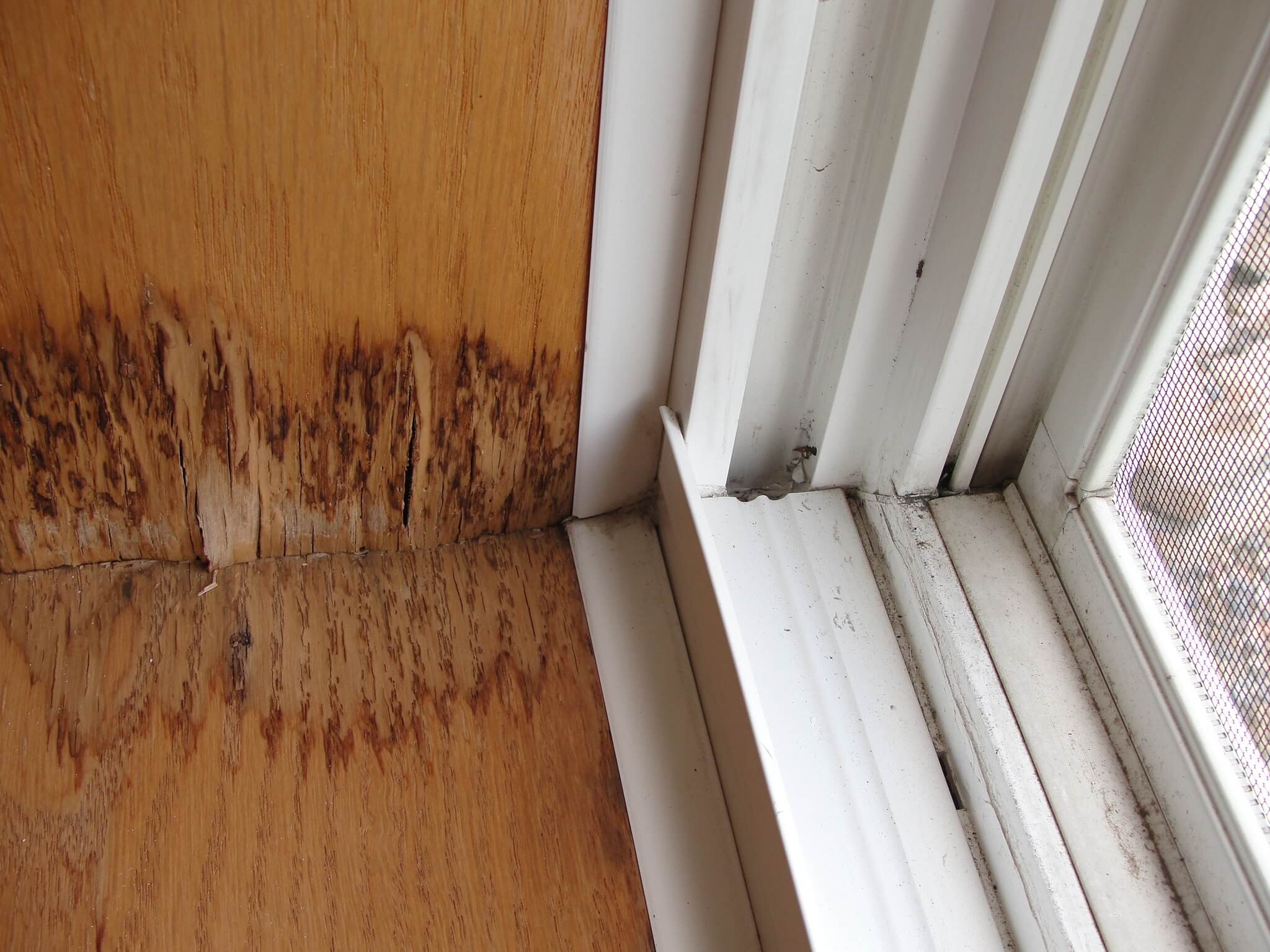
These guys learned to share | Your Home Inspected
April 30, 2013, 10:15 am
[…] Last year I discovered a StructureTech, an American home inspection company. They have Facebook and ActiveRain posts hi-liting the numerous defects to be found in our homes and what to look out for. I wanted to share this link below. It’s a good source of info and one that, regardless of selling or living in your house forever, can help you maintain it and even enjoy it more! http://www.structuretech1.com/2013/04/home-inspection-checklist-interior/ […]
George
May 13, 2013, 6:47 pm
I’m going to bookmark this for future reference. The photos really help out a lot. I never know what to look for around the house. I always hire a home inspector when I buy a house but it’s nice to know what to look for myself as well.